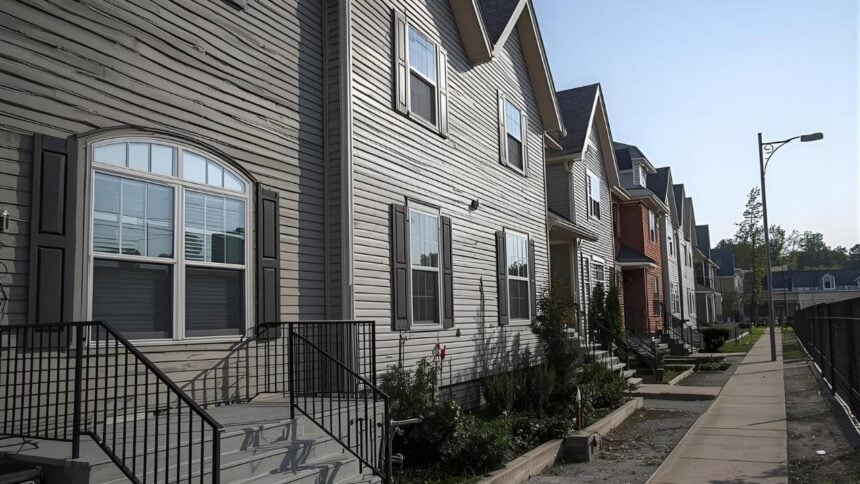Canada’s fall housing season is arriving with more choice but fewer buyers ready to pounce. National home sales in August rose 1.1% from July, the fifth straight monthly gain, yet active listings were 8.8% higher than a year earlier.
The sales-to-new-listings ratio eased to 51.2% and there were 4.4 months of inventory, signaling a market that is tilting toward balance rather than a surge in demand.
The national benchmark price was little changed on the month and down 3.4% from a year earlier, according to the Canadian Real Estate Association.
Even with the Bank of Canada trimming its policy rate to 2.5% on September 17, qualification remains the choke point for many would-be buyers.
The federal regulator’s minimum qualifying rate for uninsured mortgages still requires borrowers to prove they can pay the greater of their contract rate plus two percentage points or 5.25%.
That hurdle moves only gradually when lenders cut posted rates, and it looms large for households with stretched debt ratios.
OSFI did remove the stress-test requirement for straight-switch renewals in late 2024, but that relief does not apply to first-time buyers trying to enter the market.
The squeeze is particularly acute in big-city condo markets where investors once provided a steady stream of demand.
Joint research from CIBC and Urbanation shows a large majority of leveraged investors in newly built Greater Toronto Area condos were cash-flow negative last year, with the average shortfall at roughly $600 a month.
The share in the red was even higher in the first half of 2024. That math has pushed many investors to list units, delay new purchases or abandon preconstruction assignments rather than take possession at completion.
Canada Mortgage and Housing Corp. reports that a pullback in investor demand reduced feasibility for condo projects in the first half of 2025, leading to cancellations, delays and a sharp drop in starts in Toronto.
Rental-apartment construction held up better but also slowed. Fewer pre-sales today mean fewer completions tomorrow, which complicates the supply outlook just as population growth and household formation remain strong.
A lower overnight rate can reduce variable mortgage costs and nudge fixed rates lower, but the qualifying buffer keeps the bar high until incomes rise or prices reset further.
That is why many renters who have saved down payments still fall short on paper. It is also why a quick return of bidding wars looks unlikely in most markets outside a handful of tight neighborhoods.
The Bank of Canada has made clear it is focused on getting inflation sustainably back to target, a stance that keeps financial conditions tighter than they were during the pandemic era.
Ottawa’s tax tweaks to spur new construction have been welcomed by builders, though critics argue a GST break on some projects may not reach buyers in the short run.
Meanwhile, government documents and independent research continue to warn that the supply gap will not close without sustained construction and improved productivity in the sector.
What to watch next is whether additional rate relief later this year coaxes sidelined buyers back or simply stabilizes activity at current levels.
If mortgage rates edge down and qualifying eases at the margin, move-up buyers may return first.
Investors will likely need firmer rents and lower carrying costs to flip the math back to positive territory.
Until then, the stress test and higher-than-pre-pandemic borrowing costs are setting the pace, and many first-timers are still stuck on the sidelines.
As the monetary backdrop evolves, keep an eye on how quickly lenders pass on any further policy cuts and whether spreads narrow.
The fall market opened with rising new listings but only a modest pickup in deals. Without a meaningful improvement in affordability, that looks like the story of the season.














